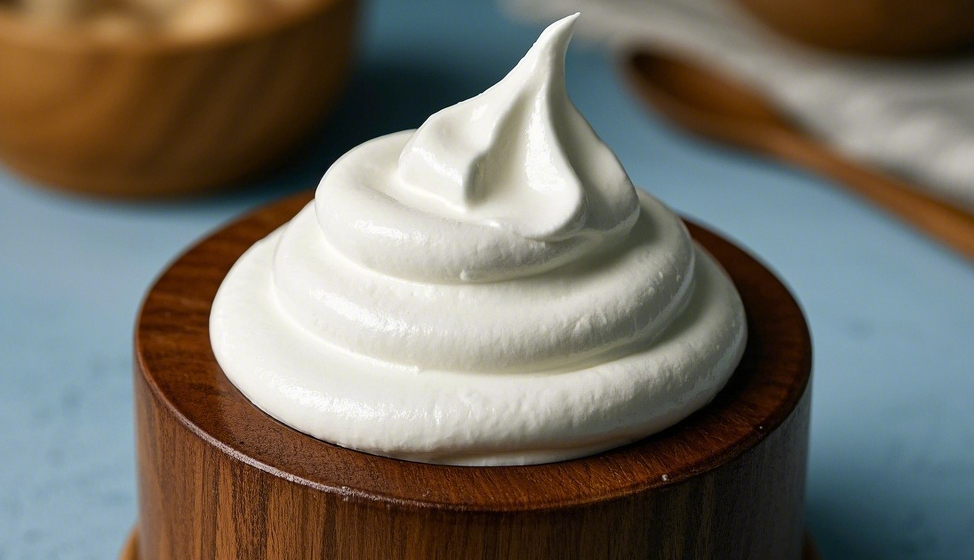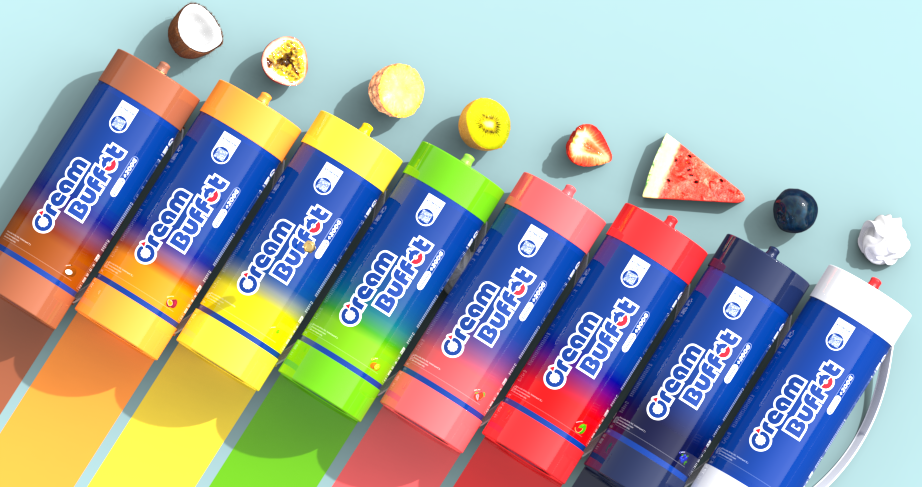Non-Dairy Whipped Cream is a popular alternative for those who are lactose intolerant, vegan, or on special diets. Traditionally made by whipping high-fat dairy cream, it has a light and sweet texture. However, non-dairy versions can be created using plant-based liquids like coconut milk, soy milk, or aquafaba. This article introduces methods for making Non-Dairy Whipped Cream, covering principles, ingredient selection, step-by-step procedures, and practical tips to help you create the perfect plant-based cream effortlessly.
By using a cream charger filled with food-grade nitrous oxide (N₂O) gas, plant-based liquids (such as coconut milk, soy milk, or aquafaba) can be whipped into non-dairy whipped cream quickly, resulting in a light and smooth texture. The process involves chilling the liquid, filling the whipped cream dispenser, injecting gas, shaking to mix, and finally dispensing fluffy cream.

1. What is a Cream Charger?
A cream charger is a metal canister filled with food-grade nitrous oxide (N₂O) gas, specifically designed for whipped cream dispensers. It works by injecting pressurized gas into a liquid, causing it to expand rapidly and form a fluffy texture. Whipped cream dispensers usually come with a nozzle for easy dispensing of smooth cream or foam.
Cream chargers are widely used in both the foodservice industry and home kitchens due to their advantages:
- Efficient and convenient: No need for manual or electric whipping; cream is ready in seconds.
- Smooth texture: Nitrous oxide creates fine bubbles, making the cream silkier.
- Extended storage: Whipped cream can be stored in the dispenser and refrigerated for 1–2 days for on-demand use.
2. Choosing Ingredients for Non-Dairy Whipped Cream
The key to non-dairy whipped cream is selecting the right plant-based liquid, as different ingredients affect the texture and flavor. Here are some common non-dairy whipping ingredients:
2.1 Coconut Milk
- High in fat (especially full-fat coconut milk), it whips up with a texture close to traditional cream and has a light coconut aroma.
- Best suited for tropical desserts or coffee.
- Should be refrigerated beforehand to solidify the fat for better whipping.
2.2 Soy Milk
- Neutral in flavor, ideal for desserts requiring a pure cream taste.
- Low fat content may require stabilizers (e.g., xanthan gum or agar) for better stability.
2.3 Almond Milk
- Moderate fat content with a nutty aroma, great for pairing with chocolate or fruit desserts.
- Like soy milk, it may need stabilizers for improved whipping.
2.4 Aquafaba (Chickpea Water)
- The thick liquid left after cooking chickpeas, rich in protein, mimicking egg whites when whipped.
- Often mixed with other plant-based milk for enhanced fluffiness and stability, making it a great option for vegans.
3. Why Use a Cream Charger for Non-Dairy Whipped Cream?
Compared to traditional whipping methods, cream chargers offer significant benefits for making non-dairy whipped cream:
- Fast and efficient: Hand or electric whipping takes time, while a cream charger completes the process in seconds.
- Better texture: Nitrous oxide distributes bubbles evenly, creating a finer, fluffier texture and preventing separation of water and fat due to over-whipping.
- Convenient storage: Whipped cream can be stored directly in the dispenser and remains stable when refrigerated.
4. How to Make Non-Dairy Whipped Cream with a Cream Charger
4.1 Required Tools
- Cream Buffet whipped cream dispenser (recommended stainless steel, available in 500ml/1L capacities)
- Cream Buffet food-grade cream charger (N₂O gas canister)
- Chilled non-dairy liquid (e.g., coconut milk, soy milk)
- Optional: Sweeteners (e.g., sugar, maple syrup), vanilla extract, cocoa powder for flavoring
4.2 Step-by-Step Instructions
4.2.1 Chill the Liquid
- Refrigerate the plant-based milk (e.g., coconut milk) for at least 1 hour.
- Chilling helps solidify the fat, making the cream easier to whip and more stable.
4.2.2 Fill the Whipped Cream Dispenser
- Pour the chilled liquid into the dispenser, ensuring it does not exceed 2/3 of its capacity for optimal gas mixing.
- If adding flavorings (e.g., sugar, vanilla, cocoa powder), mix well before sealing.
4.2.3 Install the Cream Charger
- Insert the cream charger into the dispenser’s gas valve and tighten to ensure a proper seal.
- Press down to release the nitrous oxide into the dispenser (a slight “hissing” sound is normal).
4.2.4 Shake to Mix
Shake the dispenser vigorously for 10–15 seconds to allow the gas to fully integrate with the liquid and create fluffy cream.
4.2.5 Dispense the Cream
- Gently press the nozzle to release the whipped cream.
- For first-time use, a brief release of air may be needed to adjust the pressure.
5. Tips for Perfect Non-Dairy Whipped Cream
5.1 Use high-fat liquids
- The higher the fat content, the easier and more stable the whipped cream.
- Full-fat coconut milk or added plant-based fats (e.g., coconut oil) work best.
5.2 Control the liquid ratio
Overfilling the dispenser may prevent proper gas mixing, affecting the whipping effect.
5.3 Use immediately for best texture
- Non-dairy whipped cream tastes best within an hour of whipping.
- If storing, refrigerate for 1–2 days and shake lightly before use.
5.4 Experiment with flavors
Customize your whipped cream by adding matcha powder, caramel sauce, or fruit purée.
6. Safety Precautions
- Use only food-grade equipment: Ensure the cream charger and dispenser meet food safety standards. Brands like Cream Buffet and Cream Deluxe are reliable choices.
- Keep away from heat and open flames: Nitrous oxide canisters may explode when exposed to high temperatures. Store in a cool place.
- Dispose of empty canisters properly: Do not puncture or incinerate used gas canisters. Follow local recycling regulations.

7. Conclusion
By selecting the right plant-based ingredients and following proper steps, anyone can easily create light and delicious non-dairy whipped cream with a cream charger, adding unique flavors to desserts, coffee, or baked goods.
What are you waiting for? Try Cream Buffet cream chargers today!